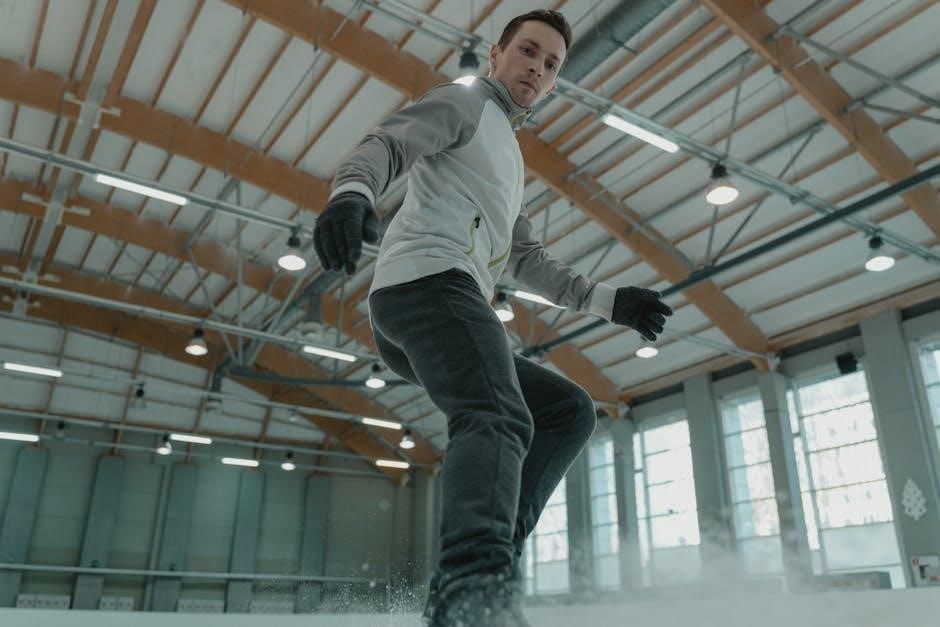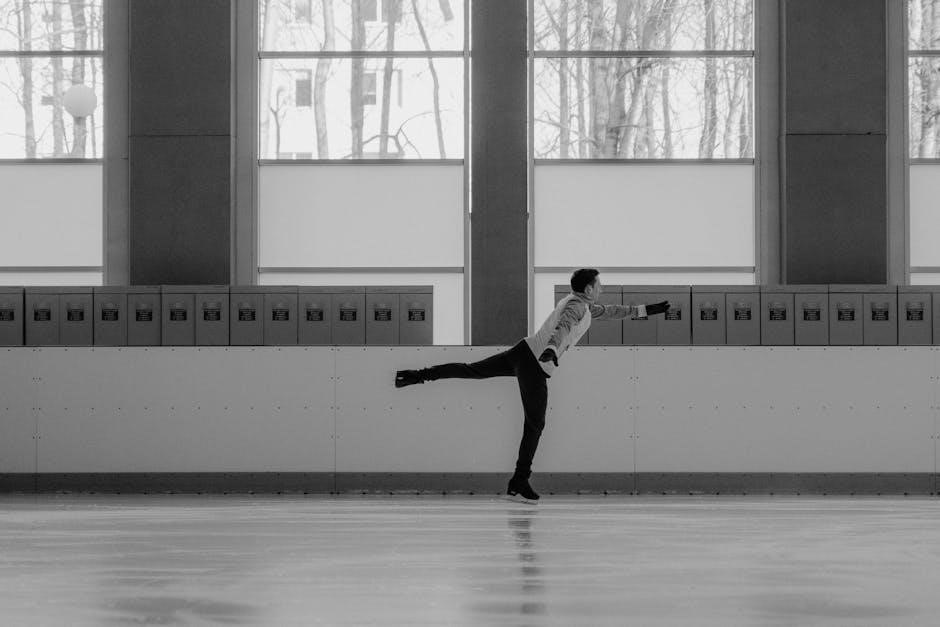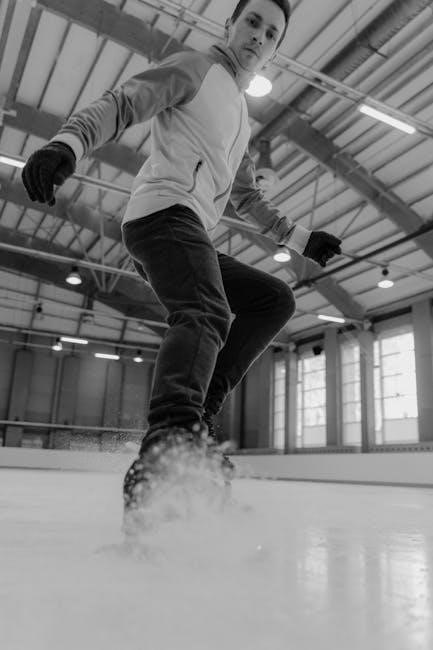Laminectomy Exercises PDF: A Comprehensive Guide
This comprehensive guide provides valuable information to improve flexibility, strength, and confidence after laminectomy surgery. The exercises are divided into phases, ensuring a safe and effective recovery. The document includes clear instructions and progressions, assisting in pain reduction and functional restoration following surgery.
A laminectomy is a surgical procedure designed to alleviate pressure on the spinal cord or nerve roots, often performed to treat spinal stenosis or herniated discs. Post-operative recovery is a critical phase, focused on regaining strength, flexibility, and function. This guide provides a structured exercise program to aid in this recovery process. The program is divided into phases, each tailored to specific stages of healing and rehabilitation. Following a laminectomy, it is essential to adhere to a carefully designed exercise plan to promote optimal healing and prevent complications.
The exercises outlined in this guide are intended to help reduce pain, improve mobility, and restore function. Each phase of the program builds upon the previous one, gradually increasing the intensity and complexity of the exercises. This progression ensures that the body is challenged appropriately, without placing undue stress on the healing tissues. It is crucial to consult with a physical therapist or healthcare provider before starting any exercise program after a laminectomy. A qualified professional can assess individual needs and tailor the program accordingly.
This guide serves as a valuable resource for patients undergoing laminectomy, providing a roadmap for a successful recovery through targeted exercises and progressive rehabilitation. Remember to listen to your body and prioritize proper form to maximize benefits and minimize the risk of injury.
Phase 1: Immediate Post-Operative Exercises

Phase 1 of post-operative exercises begins immediately following laminectomy surgery, focusing on gentle movements to promote circulation and prevent complications. The primary goals are to reduce pain, minimize swelling, and initiate early muscle activation. These exercises are performed in a controlled environment, typically under the guidance of a physical therapist or nurse. It is crucial to avoid any movements that cause pain or discomfort during this phase.
The exercises in Phase 1 are designed to be low-impact and easily manageable, even while lying in bed. Ankle pumps and neuro stretches are commonly introduced to improve blood flow in the lower extremities and stimulate nerve function. Transverse abdominis (TA) activation, or TA bracing, is another essential exercise to engage core muscles and provide spinal support. Glute sets are also incorporated to activate the gluteal muscles, which play a crucial role in stabilizing the pelvis and lower back.
Proper form and technique are paramount in Phase 1 to avoid strain or re-injury. Focus on controlled, deliberate movements and listen to your body’s signals. These early exercises lay the foundation for subsequent rehabilitation phases, setting the stage for a successful recovery. Remember to maintain good posture and spinal alignment throughout the day, even when resting. Consistency and adherence to the prescribed exercise routine are key to achieving optimal outcomes.

Ankle Pumps and Neuro Stretches
Ankle pumps and neuro stretches are fundamental exercises in the immediate post-operative phase following a laminectomy. These gentle movements are designed to enhance circulation, prevent blood clots, and stimulate neurological function in the lower extremities. Ankle pumps involve repeatedly pointing the toes up towards the ceiling and then down towards the floor, engaging the calf muscles and promoting blood flow. Neuro stretches, also known as nerve gliding exercises, aim to improve nerve mobility and reduce nerve-related pain.
To perform ankle pumps, lie on your back with your knees slightly bent. Slowly and deliberately point your toes up as far as comfortable, holding for a second, then point them down as far as possible. Repeat this motion rhythmically for several repetitions. For neuro stretches, begin in the same position. Gently flex your ankle and then extend your knee, feeling a mild stretch along the back of your leg. Avoid any sharp or intense pain during these stretches.
These exercises can be performed multiple times a day, even while lying in bed. Consistency is key to maximizing their benefits. They help to reduce swelling, improve nerve function, and prepare the lower extremities for more advanced exercises in later rehabilitation phases. Remember to breathe deeply and maintain a relaxed posture while performing these movements. If you experience any increased pain or discomfort, consult with your physical therapist or healthcare provider.

TA Bracing (Transverse Abdominis Activation)
TA bracing, or Transverse Abdominis activation, is a crucial exercise for post-laminectomy recovery, focusing on core stabilization. The transverse abdominis, the deepest abdominal muscle, acts as a natural corset, supporting the spine and improving posture. Activating this muscle helps protect the surgical site and promotes healing.
To perform TA bracing, lie on your back with your knees bent and feet flat on the floor. Gently draw your navel towards your spine, as if you’re trying to pull your belly button away from your belt. It’s a subtle movement, not a forceful contraction like a sit-up. You should feel a gentle tightening in your lower abdomen without engaging your upper abdominal muscles or holding your breath.
Maintain this contraction for 5-10 seconds while breathing normally. It’s essential to avoid arching your back or tilting your pelvis during the exercise. Repeat this exercise 10-15 times, several times throughout the day.
TA bracing can be performed in various positions, including sitting and standing, as you progress in your recovery. This exercise helps to build a strong foundation for more advanced core strengthening exercises. Consistent practice of TA bracing will improve spinal stability, reduce pain, and enhance functional movement. Remember to consult with your physical therapist to ensure proper technique and progression. This exercise is a cornerstone of post-operative rehabilitation, promoting long-term spinal health and stability.
Glute Sets
Glute sets are an essential exercise in the early rehabilitation phase following a laminectomy, focusing on strengthening the gluteal muscles, which play a vital role in supporting the lower back and improving posture. Strong glutes contribute to spinal stability and help reduce strain on the surgical site.
To perform glute sets, lie on your back with your knees bent and feet flat on the floor. Gently squeeze your buttocks together, as if you are holding a coin between them. Hold this contraction for 5-10 seconds, focusing on engaging the gluteal muscles without straining your back. It’s important to maintain a neutral spine throughout the exercise, avoiding any arching or tilting of your pelvis.
Relax and repeat this exercise 10-15 times, several times throughout the day. As you become more comfortable, you can gradually increase the hold time and the number of repetitions. Glute sets can be performed in various positions, including sitting and standing, as you progress in your recovery.
This exercise helps to improve hip extension strength and endurance, which is crucial for activities such as walking, standing, and lifting. Consistent practice of glute sets will enhance spinal stability, reduce pain, and improve overall functional movement. Remember to consult with your physical therapist to ensure proper technique and progression. This exercise is a fundamental component of post-operative rehabilitation, promoting long-term spinal health and stability.

Phase 2: Early Rehabilitation Exercises
Phase 2 of post-laminectomy rehabilitation focuses on gradually increasing strength, flexibility, and endurance. This phase typically begins a few weeks after surgery, depending on individual progress and surgeon recommendations. The primary goals are to improve core stability, enhance range of motion, and prepare for more demanding activities.
Exercises in this phase include gentle stretching, core strengthening, and low-impact aerobic activities. A walking program is often initiated, starting with short durations and gradually increasing distance and intensity as tolerated. Core strengthening exercises, such as pelvic tilts and abdominal bracing, are introduced to improve spinal support.
It’s crucial to maintain proper posture and body mechanics during all activities. Avoid any movements that cause pain or discomfort. Exercises should be performed with controlled movements and proper form to prevent re-injury. Manual physical therapists will guide you to ensure correct execution and progression.
This phase aims to restore functional movement patterns and improve overall physical conditioning. Consistency is key, and regular performance of prescribed exercises will contribute to a faster and more complete recovery. Remember to listen to your body and avoid overexertion. By gradually increasing activity levels and strengthening supporting muscles, you can safely progress towards more advanced rehabilitation exercises. This phase sets the foundation for returning to daily activities and improving long-term spinal health.
Walking Program: Gradual Increase in Duration
The walking program is a crucial component of early rehabilitation following a laminectomy, designed to progressively improve cardiovascular fitness, endurance, and lower extremity strength. Starting slowly and gradually increasing duration is essential to avoid overstressing the healing tissues and prevent setbacks.
Initially, the walking program may begin with short sessions of 10-15 minutes, once or twice a day. The focus is on maintaining proper posture and body mechanics while walking. Avoid slouching or leaning forward, and engage the core muscles to provide spinal support. As tolerated, gradually increase the duration of each walking session by a few minutes each day.
Listen to your body and avoid pushing yourself too hard, especially in the initial stages. If you experience any pain, stop and rest. As your endurance improves, you can also gradually increase the pace of your walking.
Over time, aim to progress to walking for 30-60 minutes at a moderate pace. Consistency is key to achieving optimal results. Regular walking helps improve circulation, reduce stiffness, and promote overall healing. It also plays a vital role in restoring functional mobility and preparing you for more advanced exercises. Remember to consult with your physical therapist or surgeon for personalized guidance on the appropriate progression for your specific condition.

Core Strengthening Exercises

Following a laminectomy, core strengthening exercises are vital for spinal stability and long-term recovery. These exercises focus on activating and strengthening the muscles that support the spine, including the transverse abdominis, obliques, and erector spinae. A strong core helps protect the spine from further injury and improves posture and balance.
Initially, core strengthening exercises should emphasize gentle activation and isometric contractions. TA bracing, which involves contracting the transverse abdominis muscle, is a foundational exercise. This can be performed in various positions, such as lying down, sitting, or standing. Pelvic tilts, performed while lying on your back, can also help engage the core muscles.
As your strength improves, you can gradually progress to more challenging exercises. These may include bridging, where you lift your hips off the ground while engaging your glutes and core, and bird-dog exercises, which involve extending one arm and the opposite leg while maintaining a stable core.
Remember to maintain proper form throughout all exercises to avoid strain or injury. Focus on controlled movements and engage the core muscles with each repetition. As you progress, you can increase the number of repetitions and sets. Consult with your physical therapist for guidance on appropriate exercises and progressions based on your individual needs and recovery progress.
Phase 3: Advanced Rehabilitation and Functional Training
Phase 3 of laminectomy rehabilitation marks a transition to more demanding exercises and activities aimed at restoring functional abilities. This phase focuses on building strength, endurance, and coordination to allow a return to daily tasks, recreational activities, and potentially work-related duties. It is crucial to consult with a physical therapist before progressing to this phase to ensure readiness and minimize the risk of re-injury.
Exercises in Phase 3 often involve incorporating more dynamic movements and increasing the load or resistance. Core strengthening exercises progress to include planks, side planks, and rotational exercises. Lower body strengthening focuses on exercises like squats, lunges, and step-ups, which build strength and stability in the legs and hips.
Functional training is a key component of Phase 3, involving exercises that mimic real-life activities. This may include lifting and carrying objects, bending and reaching, and performing tasks specific to your job or hobbies. The goal is to improve your ability to perform these activities safely and efficiently.
Cardiovascular exercises, such as walking, swimming, or cycling, are also incorporated to improve endurance and overall fitness. The intensity and duration of these exercises should be gradually increased as tolerated. Throughout Phase 3, it is essential to listen to your body and avoid pushing yourself too hard. Pain is a signal to slow down or modify the exercise.

Bodyweight Squats and Lunges
Bodyweight squats and lunges are excellent exercises for strengthening the lower body and improving functional movement patterns after a laminectomy. These exercises help build strength in the quadriceps, hamstrings, glutes, and core muscles, which are essential for stability and mobility. Before starting these exercises, ensure you have adequate core strength and balance.
To perform a bodyweight squat, stand with your feet shoulder-width apart and your toes slightly outward. Keep your back straight and your core engaged as you lower your hips down as if sitting in a chair. Aim to reach a depth where your thighs are parallel to the ground, but only go as low as you can comfortably. Push through your heels to return to the starting position.
Lunges can be performed as either forward lunges or reverse lunges. For a forward lunge, step forward with one leg and lower your body until both knees are bent at approximately 90 degrees. Ensure your front knee stays behind your toes. Push off with your front foot to return to the starting position. For a reverse lunge, step backward with one leg and lower your body as described above.
Start with a small number of repetitions and gradually increase as you get stronger. Pay close attention to your form to avoid any pain or discomfort. If you experience any pain, stop the exercise and consult with your physical therapist.

Resuming Activities: Cardio and Other Exercises (Pilates, Swimming)

After progressing through the initial phases of laminectomy rehabilitation, resuming cardio and other exercises like Pilates and swimming can significantly enhance your recovery. These activities improve cardiovascular health, strengthen core muscles, and promote overall well-being. However, it’s crucial to reintroduce these exercises gradually and under the guidance of your physical therapist.
Walking is an excellent starting point for cardio. Begin with short, frequent walks and gradually increase the duration and intensity as tolerated. Stationary biking is another low-impact option that can be introduced after a few weeks.
Pilates is beneficial for core strengthening and improving spinal stability. Focus on exercises that emphasize proper form and controlled movements. Swimming is a gentle, full-body workout that minimizes stress on the spine. The buoyancy of water reduces the impact on your joints, making it ideal for post-operative rehabilitation.
Listen to your body and avoid pushing yourself too hard. If you experience any pain or discomfort, stop the activity and consult with your healthcare provider. The timeline for resuming these activities varies depending on individual progress and the extent of the surgery. Always prioritize proper form and technique to prevent re-injury.
